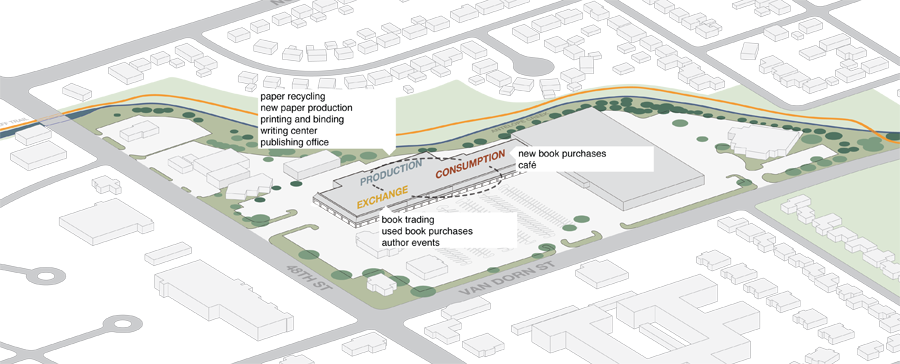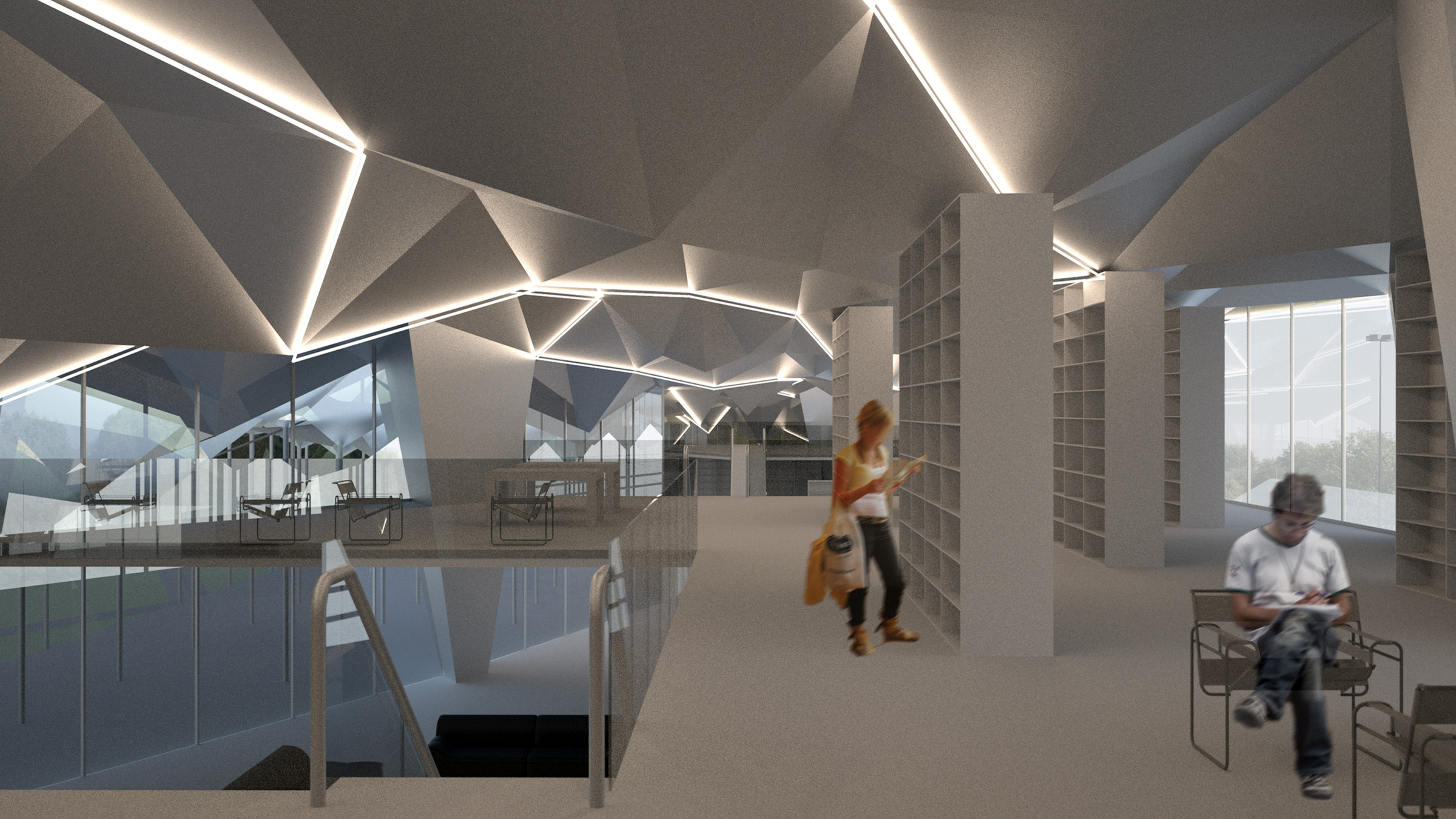Pulped Fiction
We began the semester with an investigation of roof typologies. From a list of options, I chose to explore geometries of folded plates and thin-shell hyperbolic paraboloids. I developed a basic system for generating either type of geometry from two generative surfaces. The surfaces can be subdivided into any number of segments, and, where the surfaces intersect, the resulting folded plate or hypar unit transitions from concave to convex.
No program was specified for the rooftop addition, but instead four economies: CONSUMPTION, PRODUCTION, EXCHANGE, and DISTRIBUTION. The roofscape became oriented around books.
The book is far from dead, but conventional big publishing is on its last legs. A successful modern publishing house is small, adaptable, and works creatively with both paper and digital platforms.
The strip mall and the book share essential qualities. Each are omnipresent, adaptable, and honed to maximum efficiency. Van Dorn Plaza, centrally located and the epitome of the generic strip mall in Lincoln, is well situated to become a hub for everything involved in the production and consumption of literature.
But the efficiency model of the strip mall is contingent upon cheap (yet otherwise costly) international shipping. Under a new model, physical production and consumption are concentrated within the city, while the publishing house can still draw from a worldwide pool of content. Partner houses all over the world can print for their locations, and people are also able to access the content digitally.
![Existing condition]()
![Localization of processes]()
The roofscape includes a paper production facility utilizing a combination of recycling and cultivation (on a scale somewhere between industrial capacities and craft papermaking), a small publishing firm, writers’ studio, and bookstore/exchange.
![]()
The programmed space occurs between a new folded plate concrete roof of regular proportions and an upper double-layered folded steel plate roof. The concave concrete units are filled either with additional concrete for the programmed spaces or with soil for planting. Two vacant bays of the strip mall below become access points—one at the bookstore end, the other at the paper processing end.
![]()
![]()










